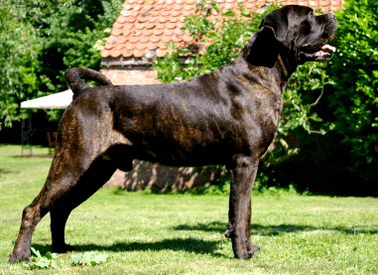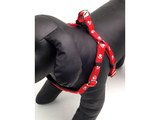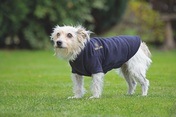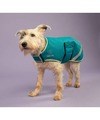
Thought to have hailed thousands of years ago from the mountainous lands of central Asia, the Mastiff - perhaps deriving its name from Latin meaning 'huge' - has enjoyed consistent popularity throughout its history. Originally known as molassers, the Mastiff was primarily bred to guard and hunt, whilst being a popular frequenter of the dog fighting pits. The Mastiff is featured on the walls of ancient Egyptian pyramids and is depicted as the three-headed guardian of the Underworld in Greek mythology. It was also a popular breed choice for the Romans and Greeks in battle, being highly prized for its willing and fearless temperament, and as a personal protection and property guard in Medieval times. The Mastiff was first developed in England in 1835, the very same year that dog-fighting was made illegal, and was officially recognised by the American Kennel Club in 1885.
A stocky and powerful-looking breed, boasting strong legs of moderate length, a deep chest for aiding stamina, a broad head with a deep, square-cut muzzle and medium-length pendant ears. Characteristically robust rather than tall, the Mastiff is impressive in size and stature. The short single coat is typically coloured black brindle, apricot or fawn, usually with speckling and always with a black mask. The breed standard originally stated that only short, close-fitting coats were acceptable, although long-haired varieties are now more often seen.
Often described as a 'gentle giant' by Mastiff owners, the breed is deceptive in appearance, suggesting a fierce fighter dog, whilst being inherently quite the opposite. Responding fearlessly if danger threatens, acting to protect both its family and home, the Mastiff will otherwise remain docile, gentle and mannered, displaying a pleasant and easy-going temperament that makes it well suited to relaxed domestic living. Devoted to children, the Mastiff makes a great breed choice for families. On average, a fully grown Mastiff will weigh 54-110 kg with large discrepancies across gender, with a life expectancy of 8-10 years.
Although generally a healthy and resilient breed, the Mastiff is susceptible to certain ailments, including hip dysplasia and associated orthopedic complaints, as well as several optical problems. Additionally, the Mastiff is prone to various cancers and mast-cell tumours, as well as cardiac diseases including pulmonic stenosis and mitral dysplasia.








From Bedfordshire, United Kingdom
They are most loveable and kissable dogs ever.Always next to you-you can't even go to the toilet or bathroom without your Mastiff's company,they love to sleep on the sofa and with you in your bed.Some of them can be very stubborn but they are very clever at the same time.They are strong and powerful,very playful ,need decent walk and run off the lead.Their tail is wagging pretty much all the time,they are always so happy when you coming back home.They eat a lot,snore very loud but they don't drool all the time as most of the people think.They are joy to be around,loads of fun and happiness.
From United Kingdom
I wanted to post on the Mastiff breed and to say he is a loveable dog and loves his comfort and food,he is always close to us and loves a walk but he cannot walk far lately, he has hydrotherapy for his back legs.
He loves a cuddle and strokes and misses us when we go out but welcomes us wagging his tail when we come home.
He is a very big boy with a big mouth which first of all I was wary of because I was not use to a big breed,he loves cats and has to get use to strange dogs gradually over time.He was a rescue dog who had been neglected.We wouldn't be without him for the world.